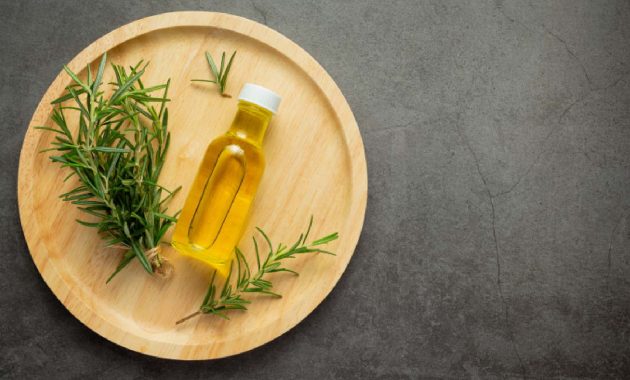From cooking to hair care, rosemary oil has tons of benefits. Learn how to make rosemary oil at home for your convenience.
If you have a penchant towards home gardening or are fond of cooking, you may notice that rosemary shows remarkable resilience even when the temperature cools down. So, if you wonder what to do with the extra rosemary, learning how to make rosemary oil is a great way to make the most of this beneficial herb. From using it for culinary purposes to body lotions to hair care to scented oil home fragrances, these are some simple ways to use rosemary all around your home. Wait, there is a bonus: if you are not a pro in the kitchen, there is also a no-cook rosemary oil recipe for you!
What is rosemary oil?
As the name suggests, rosemary oil is extracted or derived from the leaves of the Rosemary plant (Rosmarinus officinalis). Thin, long, and twig-like, the rosemary leaves boast of an amazing fragrance, making it a key ingredient in scented candles and perfumes. These rosemary leaves can also add a deep flavour to cooking.

There are multiple rosemary oil benefits and uses. Due to its attractive scent, rosemary oil is also widely used in hair care recipes and products. Know more about using rosemary oil for eyebrows and the benefits of rosemary oil benefits for hair growth.
As per research published in the Journal of Scientia Pharmaceutica, inhaling rosemary oil in the morning can also have a stimulating effect. This makes it a great addition to your wake-up routine or offer a midday perk.
Rosemary can not only help wake you up, but it might also help you relax. A study published in the Journal of Psychiatry Research found a link between smelling rosemary and a decrease in cortisol levels.
You may also like


Also read: 9 health benefits of rosemary tea that make it a morning elixir
Ingredients to make rosemary oil
If you are lucky enough you have rosemary growing in your garden, you can make rosemary oil with this simple recipe. Making rosemary oil at home would not break the bank, and it has tons of uses. From hair care to skin care to cooking, rosemary oil can do it all. But to start with, you will need to assemble the right ingredients.
Ingredients:
• Rosemary: Pluck enough full sprigs that they equal at least one cup approximately.
• Oil: Any specific oil you would choose would depend on your liking and the oil’s intended use. Using extra virgin olive oil for rosemary oil has many culinary benefits, but it can have an overpowering aroma in comparison to other options. Some low to no-odour alternatives include sunflower oil or canola oil which will allow rosemary’s scent to shine out.
• Strainer or cheesecloth: You will need something to strain the rosemary needles out of the oil. Refrain from using strainers with big holes.
• Glass jar: You will need a jar like a mason jar with a tight-fitting lid to store the oil.
How to make rosemary oil?
There are two methods to make rosemary oil: the cooking method and the no-cook method. You can choose whichever suits you.
The cooking method:
1. The utensils
For a gentle infusion, a slow cooker is probably your best bet, but if you do not have one, you may also use a medium-sized pan and your stovetop.
2. The cooking
You have to start by selecting four to six decent-sized sprigs of rosemary. Make sure that you do not add the stems and the needles are properly removed. Take two cups of your chosen oil, and add it to the slow cooker or pan to cover the rosemary needles. If you have extra large needles or have more rosemary, then you may add extra virgin oil to compensate.

3. Cooking method for slow cooker
For the slow cooker method, cook the infusion of oil on low heat for at least two hours, checking it often in between. Keep a check on the cooking, for the mix should only simmer and never boil. After that, turn off the slow cooker, and let the oil steep for another hour while being covered.
4. Cooking method for pan
If you are using a medium-sized pan, simmer the oil and rosemary on the stove for about 10 minutes. Again, do not let the mix come to a boil. Stir using a wooden spoon whenever needed.
5. Straining the oil
After your mixture cools down, strain the needles out. Pour the cooked oil into a mason jar with a tight-sealing lid.
The no-cook method
Cooking is an easy method to prepare rosemary oil, but you always do not have to follow that. If you have patience, time and desire to make rosemary oil sans heat, then all you need is a glass jar. Put four to five sprigs of rosemary into a jar, leaving the needle attached to them. Fill your jar with your chosen oil, close the lid, and place this herb-infused mix in a sunny window.
Then, you have to do nothing. This recipe does not demand a watchful eye. You can simply leave the jar by the window, just making sure that it does not knock over. Wait for a month or so, and by the end of the month strain the rosemary needles and fill the jar with the infused oil.
#rosemary #oil #home
